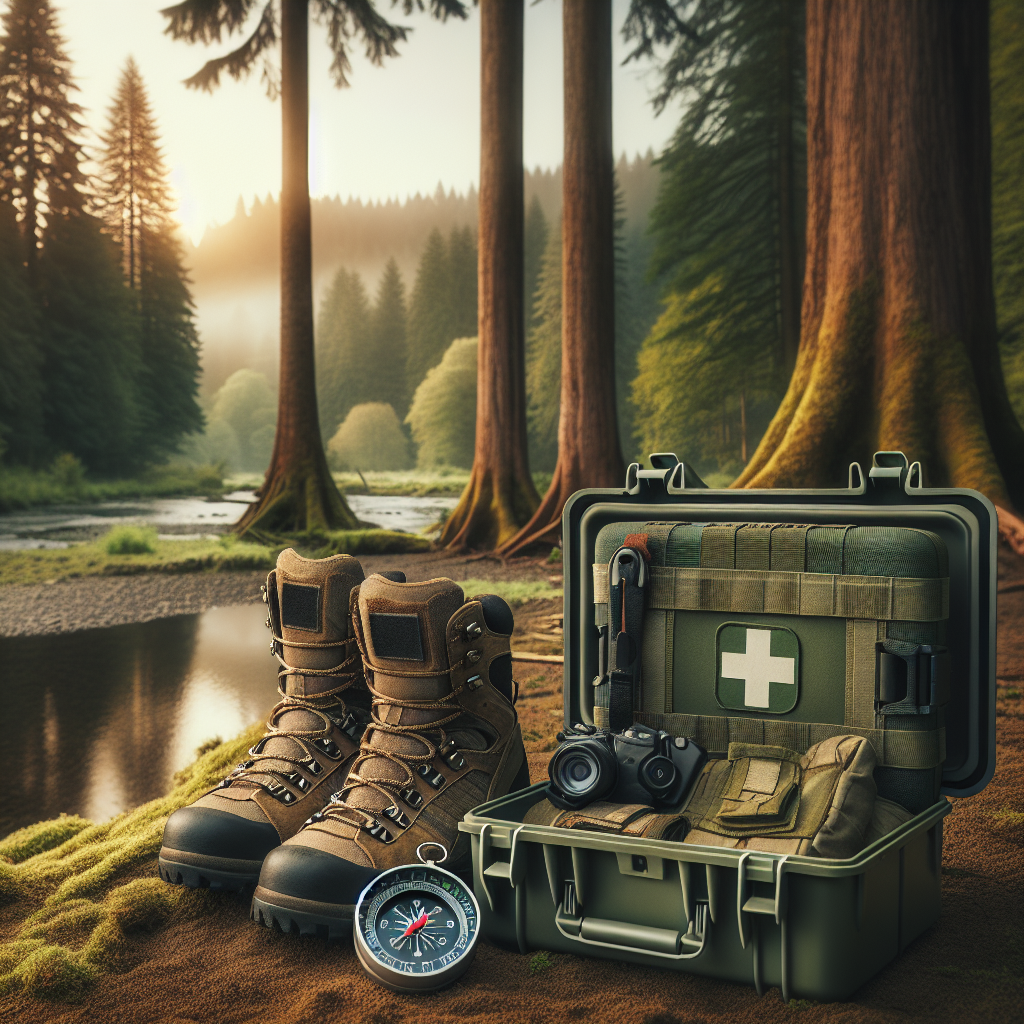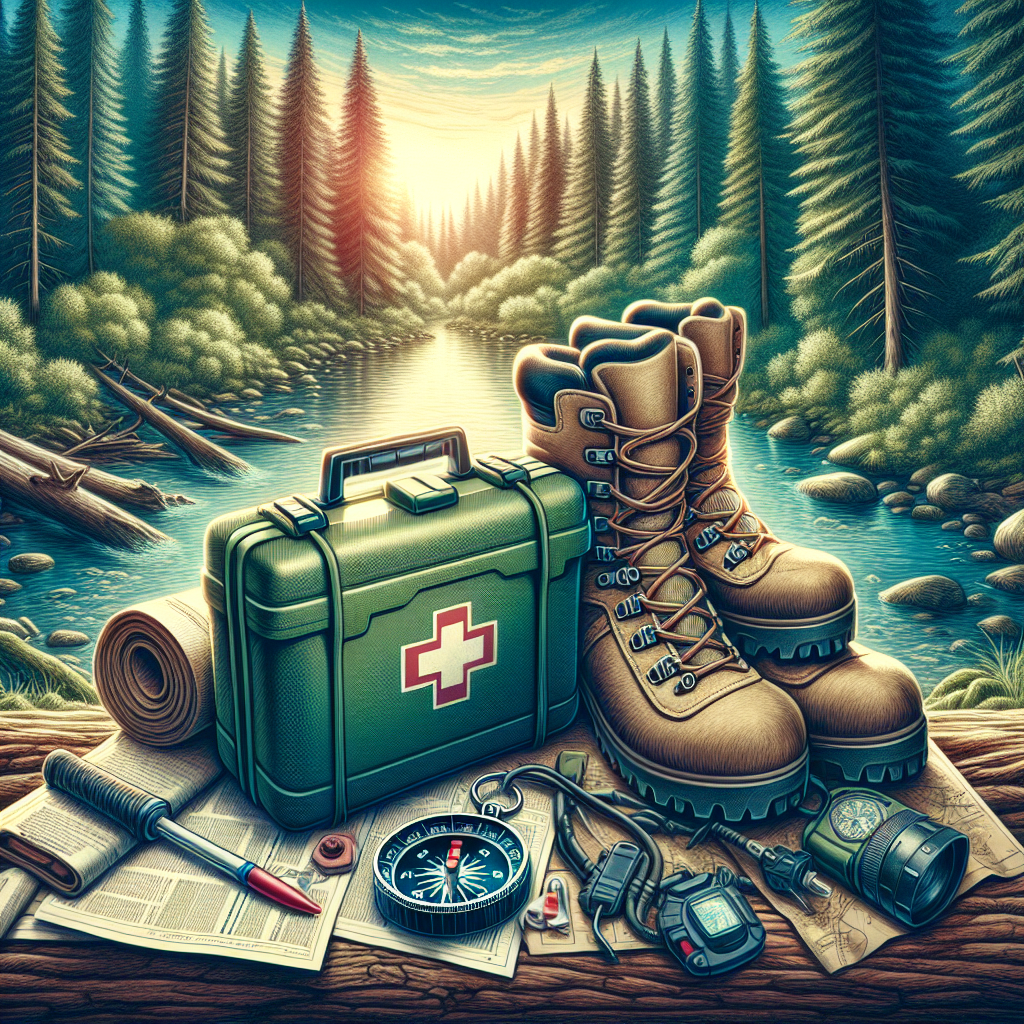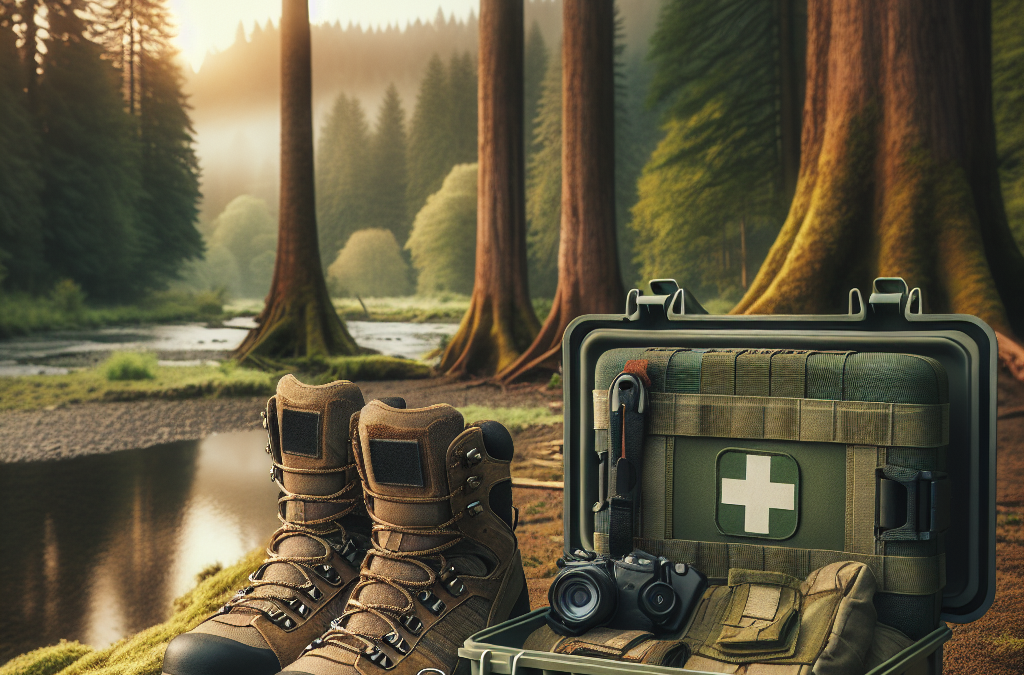As a camping enthusiast, your thirst for adventure often leads you to remote and unpredictable wilderness. While the beauty and serenity of nature are exhilarating, you also understand that unanticipated emergencies can arise. “first aid for Campers: Handling Emergencies in the Wilderness” brings you a comprehensive guide to assist you in addressing such emergencies. This article equips you with the knowledge and practical skills to give first aid and take appropriate action when faced with a medical crisis in the great outdoors. Whether it’s treating a minor scrap or responding to a life-threatening situation, this guide ensures you’re well-prepared, so you can continue to safely enjoy your wilderness excursions.
Understanding the Importance of First Aid in Camping
Welcome to the world of camping, my friend! Out here in the wilderness, it’s not just about adventure and tranquility – it’s also about being prepared for the unexpected. And that means understanding the critical role first aid plays.
Why first aid is crucial while camping
First and foremost, providing first aid can be the difference between a minor inconvenience and a life-threatening situation. Think about it. You’re on a secluded trail, miles away from civilization. Medical help could be hours away. In such a scenario, knowing how to respond to an emergency makes a world of difference, don’t you agree?
Possible health risks in camping
But what could go wrong, you ask? Well, in addition to the obvious physical injuries such as sprains, broken bones, or burns, there are the less visible ones. Dehydration, heat stroke, frostbite, or food poisoning are all possible scenarios. Then there’s the wild card of wildlife-induced complications like insect bites, allergies, or animal attacks.
Understanding wilderness as an unpredictable setting
Let’s face it, what makes camping exciting is its unpredictability. Just remember, unpredictability also means potential risks. Being prepared to handle them is what gets you back home safe and sound.
Basic First Aid Knowledge
Let’s take a step back and start with the foundation. First aid is your initial response to a medical emergency before professional help arrives or could be reached.
Understanding what First Aid is
Imagine your buddy trips and sprains an ankle while hiking. First aid would involve ensuring the person is safe, assessing the situation, providing immediate care like cold compress or immobilization, and deciding whether professional medical help is needed.
Key principles to remember in first aid
When it comes to first aid, remember three simple principles: Preserve life, Prevent worsening, and Promote recovery. It’s all about making the best out of a bad situation until help arrives.
First aid mistakes to avoid
While first aid is about helping, it’s equally important not to harm. Remember, don’t move a person with a suspected spinal injury unless absolutely necessary. Avoid giving food or drink to a person who might need surgery. And always obtain consent before providing first aid.

Trips and Falls
Trips and falls can happen anywhere, anytime, and knowing how to respond can make a big difference.
Handling minor and major fractures
For minor fractures like a hairline fracture, immobilize the area and apply a cold pack. For more significant fractures, stabilize the area using a splint, and seek medical help as soon as possible.
Addressing head injuries
Concussions and other head injuries may not be visible, so watch out for any changes in behavior or functioning. Keep the person awake while waiting for medical help.
Providing aid to sprains and strains
Rest, ice, compression, and elevation (RICE) is your go-to first aid response for sprains and strains. Remember to ease the pain and prevent further swelling until professional medical help is accessible.
Stabilizing and immobilizing injuries
Stabilization and immobilization protect the injured area from further damage. You could use a splint, bandages, or even improvised materials to stabilize and immobilize fractures or sprains.
Heat-Related Emergencies
That beaming sun can be very deceiving, my friend. You must know how to recognize and respond to heat-related emergencies.
Recognizing heat cramps, exhaustion, and stroke
Look out for muscle cramps, profuse sweating, fatigue, or dizziness. These could be warning signs for heat cramps or exhaustion. In the worst case, a heat stroke might manifest as confusion, seizures, or loss of consciousness.
Quick response to heat-related emergencies
Quickly move the person to a cool, shaded place. Loosen any tight clothing and provide cool, but not cold, water to drink. Apply cool compresses if available or spray with water.
Preventing heat-related conditions
Prevention is indeed better than cure. Stay hydrated, wear loose and light-colored clothing, and take frequent breaks if active during the hottest parts of the day.

Hypothermia and Frostbite
As the temperature drops, the risk of hypothermia and frostbite increases. Don’t worry, I’ve got you covered here.
Identifying symptoms of hypothermia and frostbite
Hypothermia often starts with shivering, but as it worsens, look for confusion, sleepiness, or slurred speech. Frostbite, on the other hand, might manifest as numbness and discolored (often whitish-gray) areas of skin.
Most effective treatment for hypothermia and frostbite
Move the person to a warmer place, remove any wet clothing, and wrap them in dry, warm blankets. In frostbite, remember to gently warm the affected areas, never rub them.
Preventing hypothermia and frostbite
Dress in layers, stay dry, consume warm food and fluids, and seek shelter when it’s too cold.
Burns and Scalds
Campfires bring warmth and comfort, but they can also pose threats if not managed properly.
Campfire safety
Remember, keep the fire contained, don’t use flammable fluids to start or boost your fire, and ensure it’s entirely out before leaving or going to bed.
First aid for minor burns
Cool the burn under cold running water for 10 to 15 minutes. Once cooled, cover it with a sterile dressing.
Dealing with severe burns
Severe burns necessitate immediate medical attention. Until then, keep the burn clean and elevated, if possible.
Avoiding infection and promoting healing
Cleanse the burn gently, apply appropriate dressing, and avoid popping any blisters to prevent infection and promote healing.
Water-Related Incidents
Water bodies can bring immense joy, and at times, some unexpected challenges too.
Preventing drowning and aquatic accidents
Always maintain safety measures like using life jackets, never swimming alone, supervising children, and understanding rip currents.
Rescue techniques
You can use several techniques, from reaching or throwing a floatation device, to wading or a boat rescue. Knowing how to perform a non-contact rescue is equally important.
First aid for near-drowning victims
After a successful rescue, start with clearing the airway, providing rescue breaths if necessary, warming the person, and seeking prompt medical assistance.
Handling aquatic creature injuries
Depends on the creature, but generally includes rinsing the area with water (hot for stings, cold for bites), removing any embedded spines, and seeking medical help.
Wilderness Bites and Stings
When camping, humans aren’t the only creatures around. Here’s what to do in case of bites and stings.
Identifying dangerous creatures in the wild
From snakes, spiders, bears, to harmless-looking plants and insects, the wilderness is full of potential threats.
Immediate actions for bites and stings
Remain calm and still to reduce spreading of venom if bitten by a snake, clean the area, and immobilize it if possible.
Procedures for specific animals or insects bites and stings
While some venomous creature bites require specific actions, the universal trick is to get professional medical help as soon as possible.
Food and Water Precautions
Camping means cooking and eating in a very different setting, and that mean adhering to a few precautions.
Ensuring safe food and water
Cook your food thoroughly, keep it covered, and wash your hands before eating. Drink only from clean and trusted water sources.
Handling food poisoning
Symptoms might vary but include nausea, vomiting, diarrhea, and fever. Rehydrate the person and seek medical help if symptoms persist.
Recognizing and treating dehydration
Look out for thirst, fatigue, dark urine, or dizziness. Rehydrate the person by providing small sips of water, rehydration solutions, or sports drinks, and cool the person down.
First Aid Training and Certifications
For a camper, being first aid trained is not mere advantage – it’s a necessity.
Why first aid training is essential for campers
Professional first aid training is essential as it prepares you to recognize and appropriately react to a variety of medical emergencies in a wilderness setting, ultimately protecting you and your group’s health and safety.
Finding relevant first aid courses
Look for a first aid course specific to wilderness or outdoor settings. These courses offer hands-on training to handle emergency situations unique to wilderness, including how to improvise solutions with limited resources.
Renewing and updating first aid certifications
Just like the wilderness evolves, so does first aid – staying up to date is absolutely necessary. Look for renewal courses, or newly introduced programs ensuring your first aid knowledge is not obsolete or outdated.
Well, that’s quite a bunch of information to digest, right? But remember, the wilderness is as much a place of mediation as it is of preparation. Stay safe, Campers!

